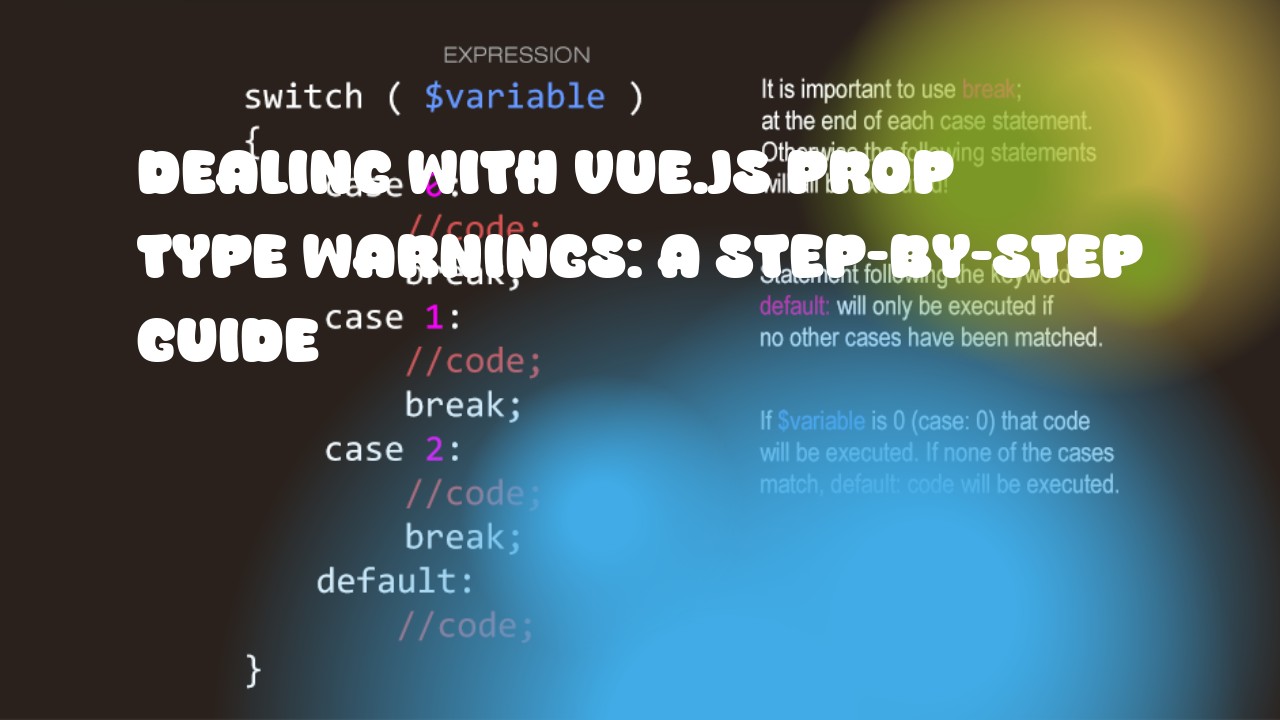Vue.js is one of the most popular JavaScript frameworks for building user interfaces. One common issue developers encounter while using Vue.js is dealing with prop type warnings. Prop types are a built-in feature in Vue.js that helps to ensure the data passed between components has the correct format, type, or any other constraints. However, when it comes to complex and nested objects, arrays, custom functions, or any data structure that could contain these issues, dealing with prop type warnings can be quite tricky. In this guide, we will explore how to properly define props in Vue.js, handle prop type warnings for complex data structures, and use Vue's Prop Validator Functions for more advanced validation.
Step 1: Define Props Correctly The first step is to correctly define the props in your component’s options object. You can do this by declaring each prop as a property of the options object with its type, default value, and optional requirement. For example:
props: {
myProp: String // Define as a string
},
or
props: {
myProp: Object // Define as an object
}
Step 2: Properly Handling Prop Type Warnings for Complex Data Structures Vue.js supports various data types for props, including strings, numbers, arrays, objects, functions, booleans, and custom components. However, when it comes to complex data structures like nested objects or arrays, dealing with prop type warnings can be tricky. Here is how you can handle these:
Handling Props as Objects When dealing with props that are objects, you can use the 'Object' type and define properties of that object separately using a special syntax.
props: {
myProp: {
type: Object,
required: true, // Set to true if prop is required
default() {
return {
key1: 'value1', // Define default values for each property
key2: 0,
};
},
},
},
Handling Props as Arrays For props that are arrays, you can use the 'Array' type and define an array of expected types.
props: {
myProp: {
type: Array,
required: true, // Set to true if prop is required
default() {
return ['value1', 0]; // Define default values for the array
},
validator(arr) {
// Implement custom validation logic here
return arr.every((item) => typeof item === 'string');
},
},
},
Handling Props as Custom Components When dealing with props that are custom components, you can use the 'Function' type and provide a function that returns a component to be used.
props: {
myProp: Function, // Define as a function
},
Step 3: Use Prop Validator Functions for Advanced Validation Vue.js also provides a built-in way to define custom validation logic for props using the 'validator' option. This option allows you to provide a function that will be called with the prop value and should return true if the value passes the validation, or false otherwise.
props: {
myProp: {
type: Number, // Define as a number
required: true, // Set to true if prop is required
validator(val) {
// Implement custom validation logic here
return val > 0;
},
},
},
In conclusion, dealing with Vue.js Prop Type Warnings can be a tricky task but it's important to ensure that the data being passed between components is of the correct type and format. By following these steps, you can properly define props, handle complex data structures, and use prop validator functions for more advanced validation.

